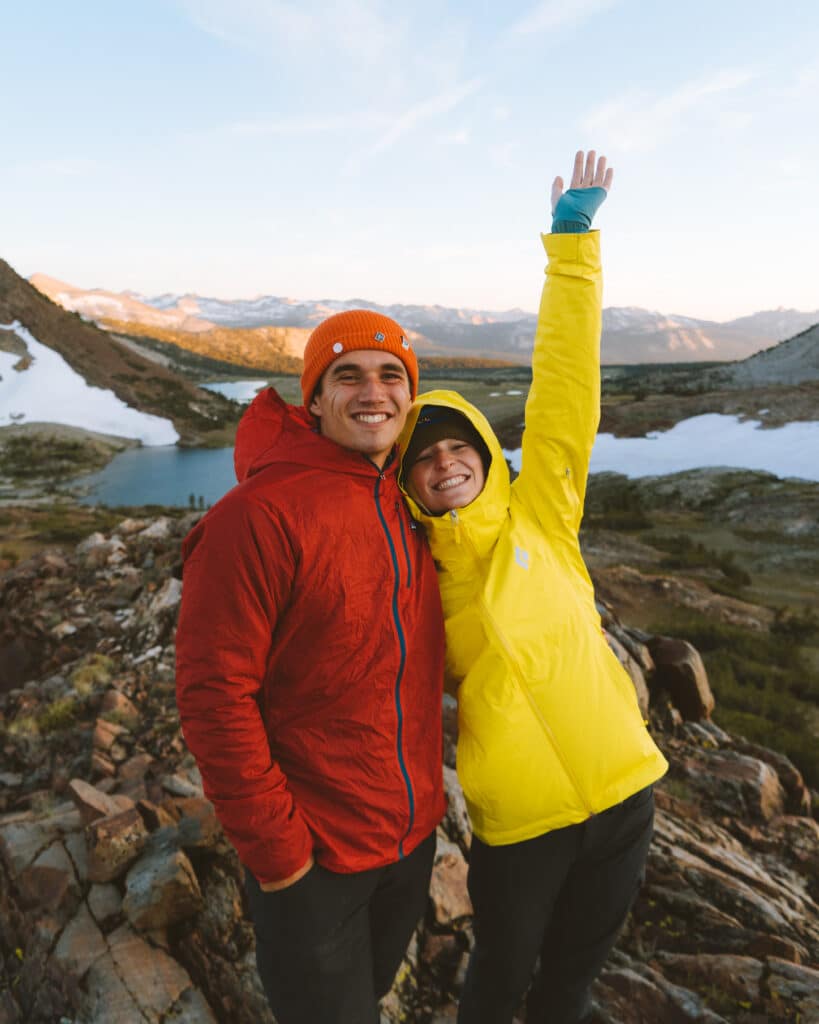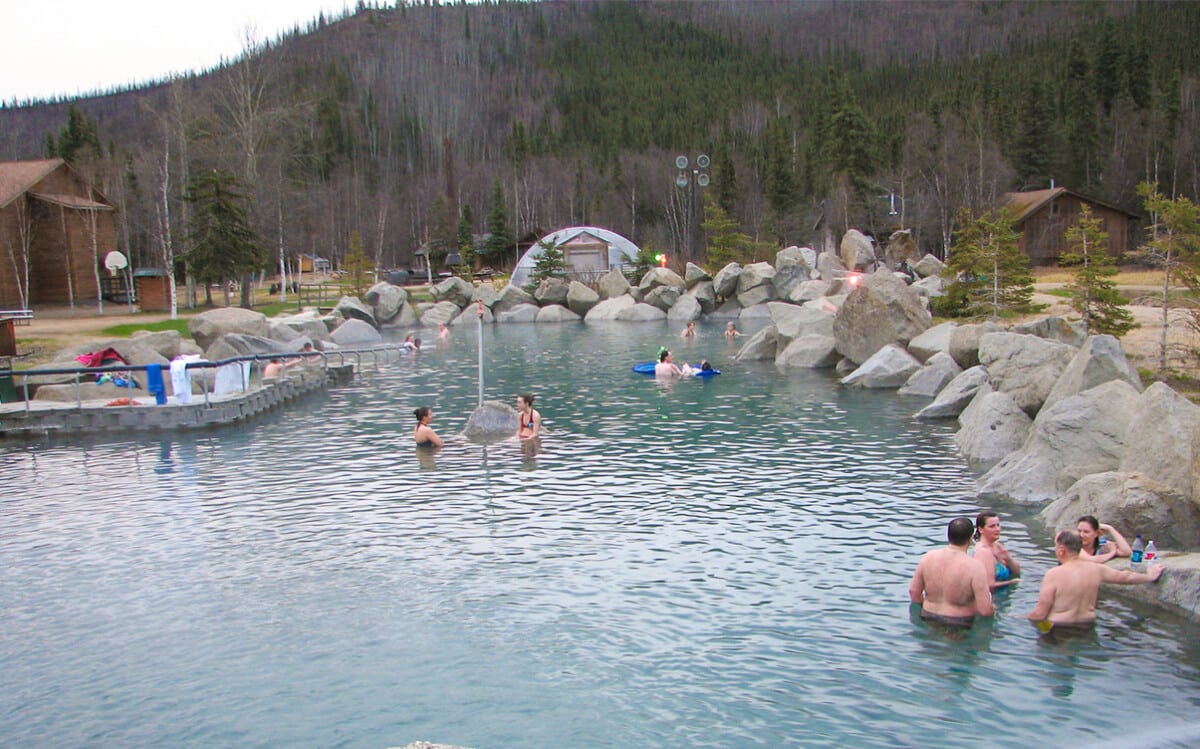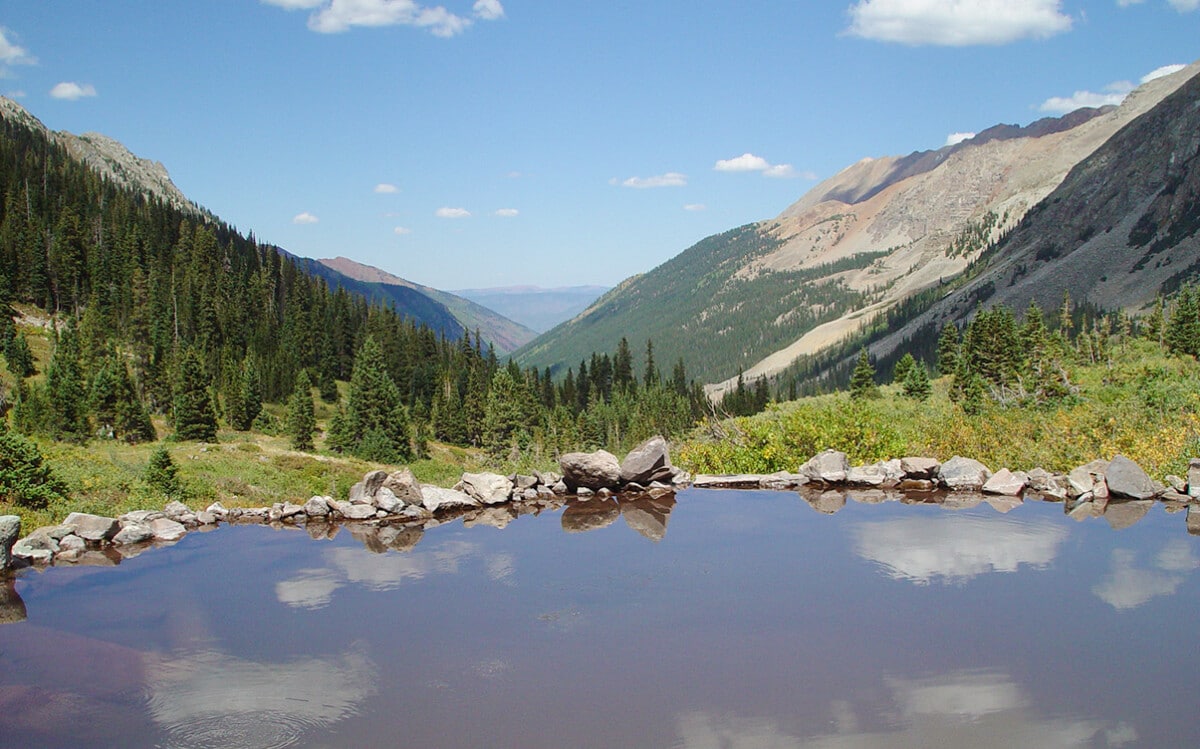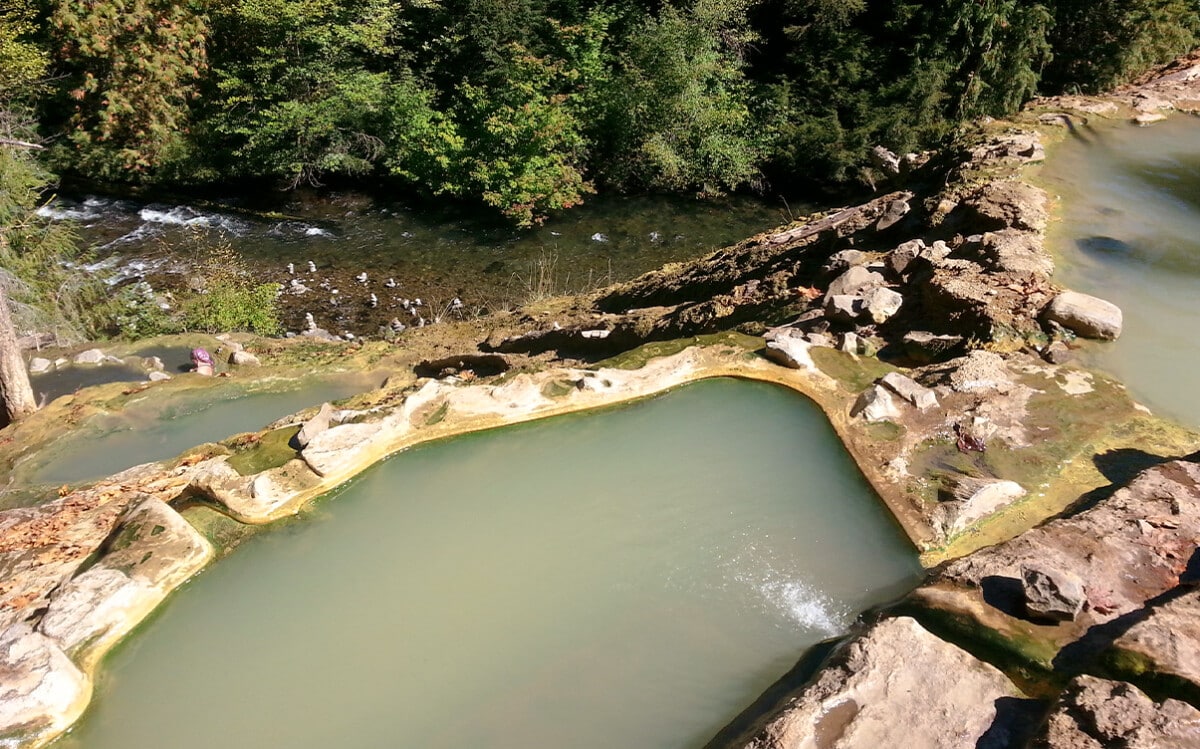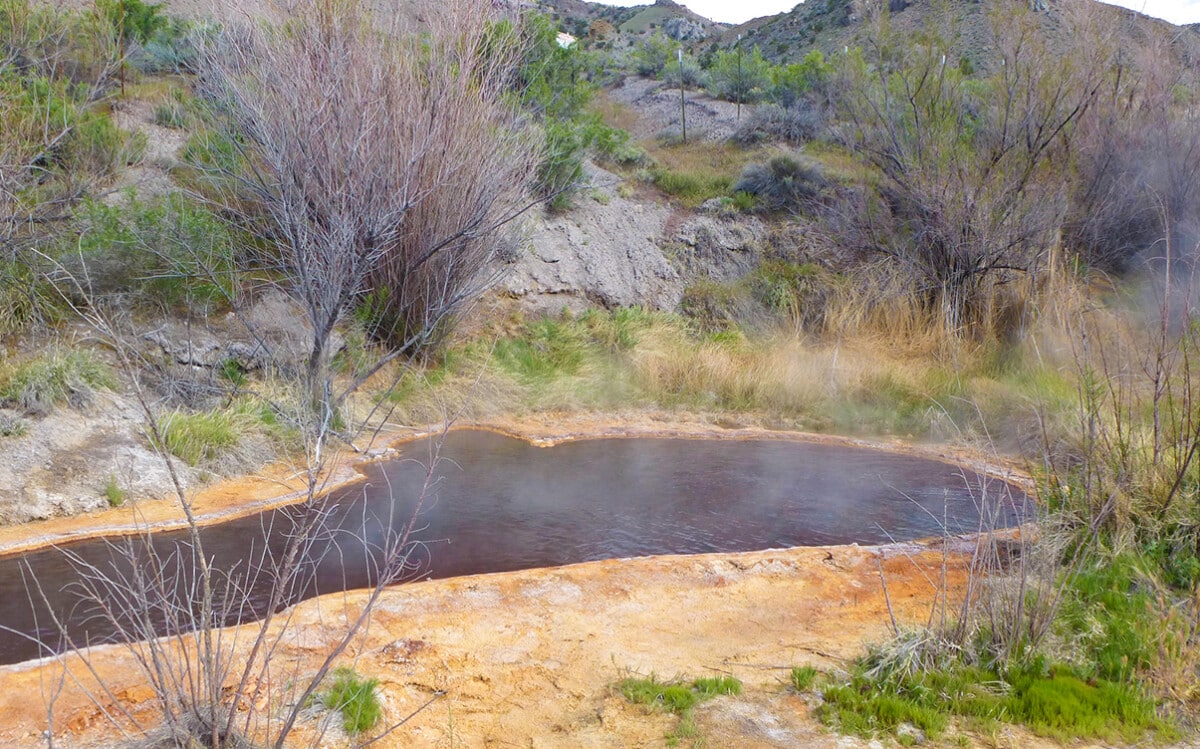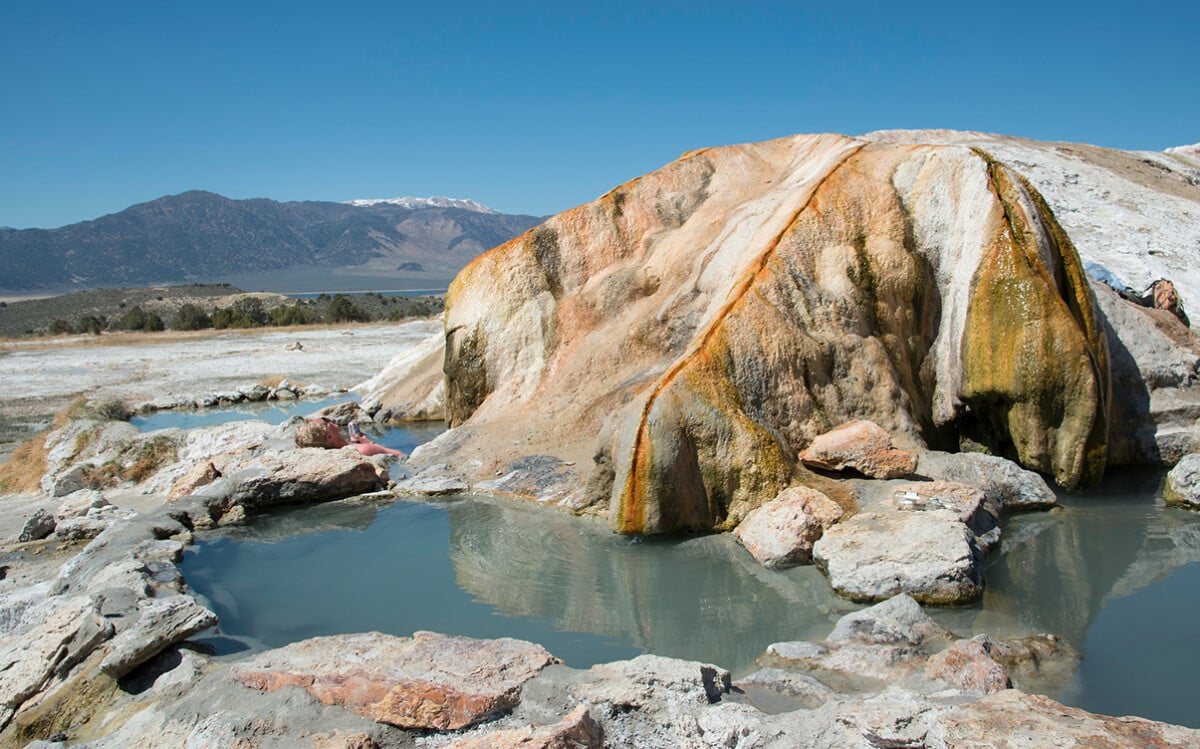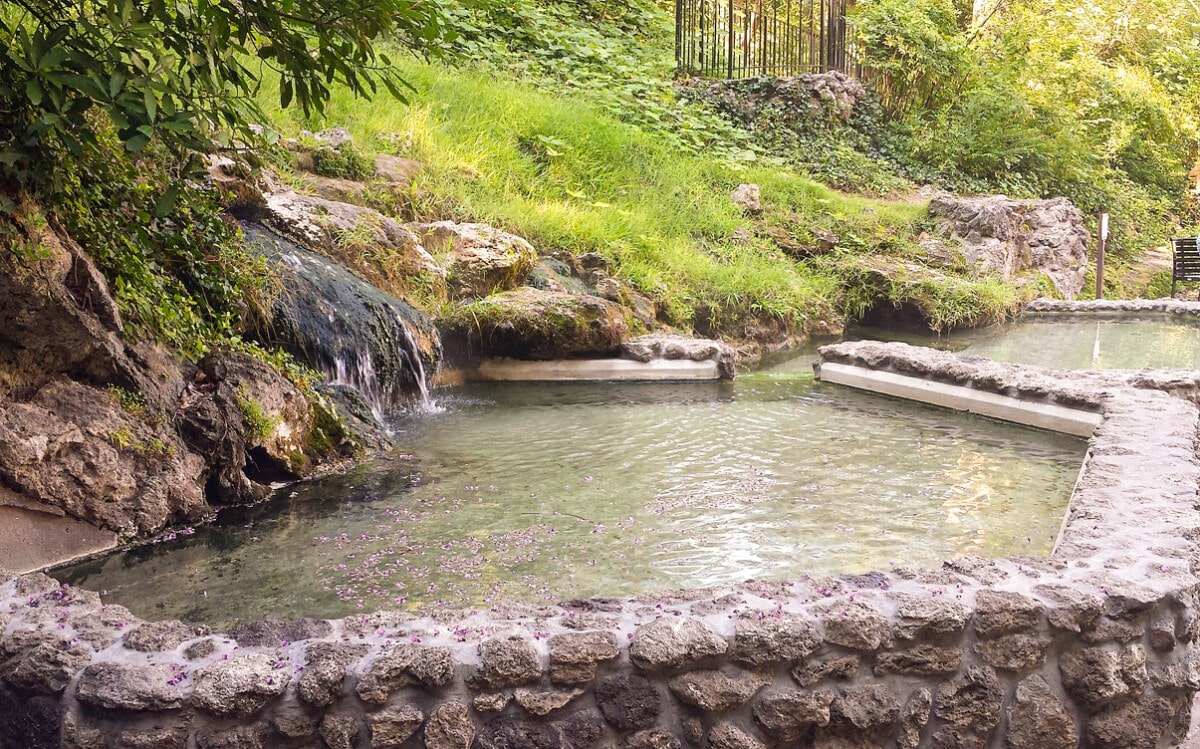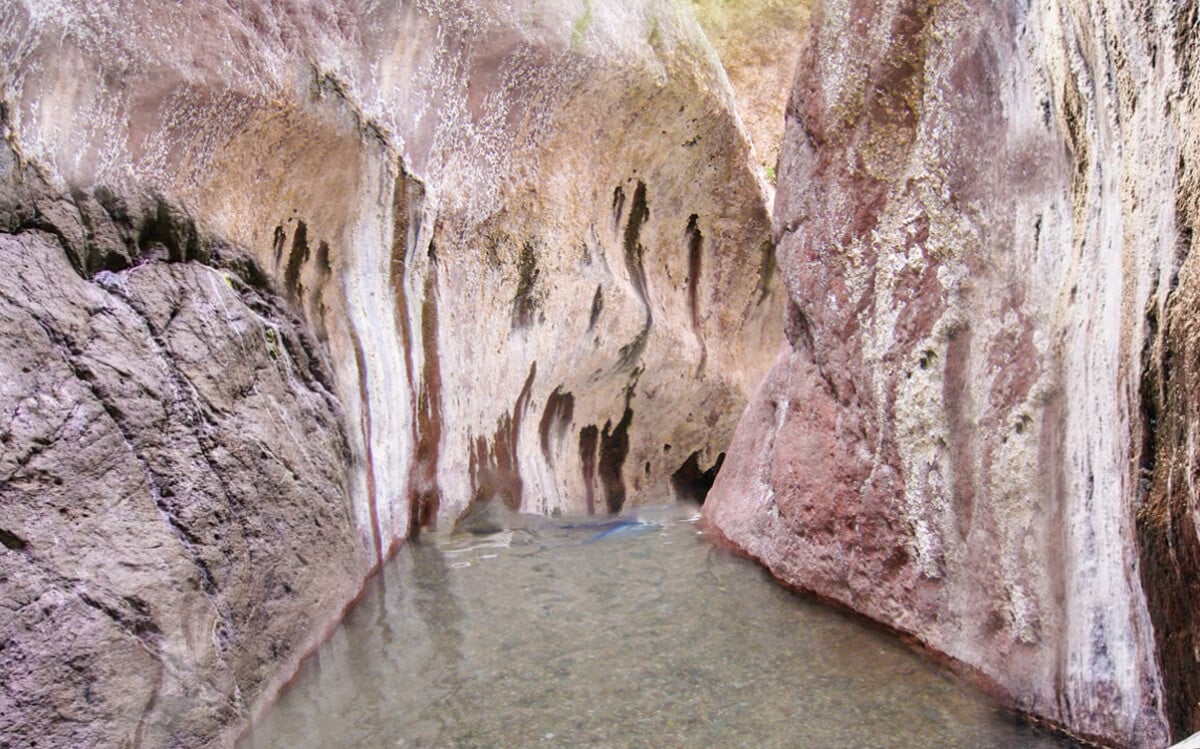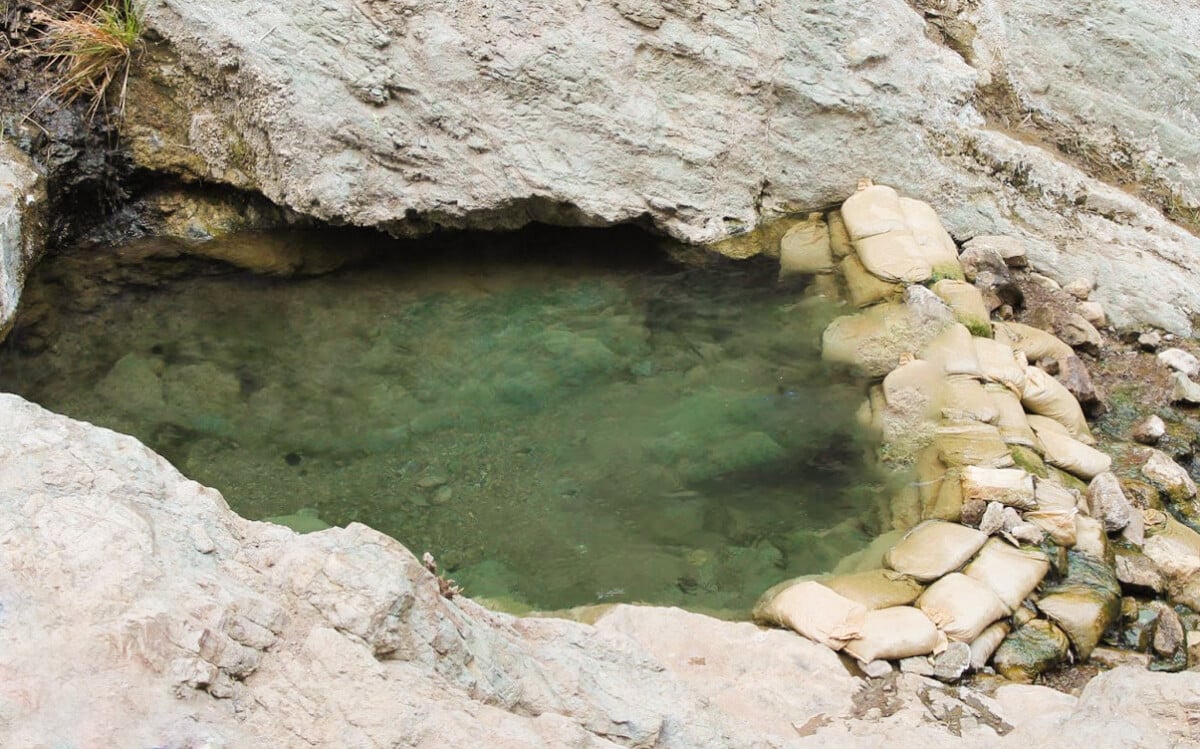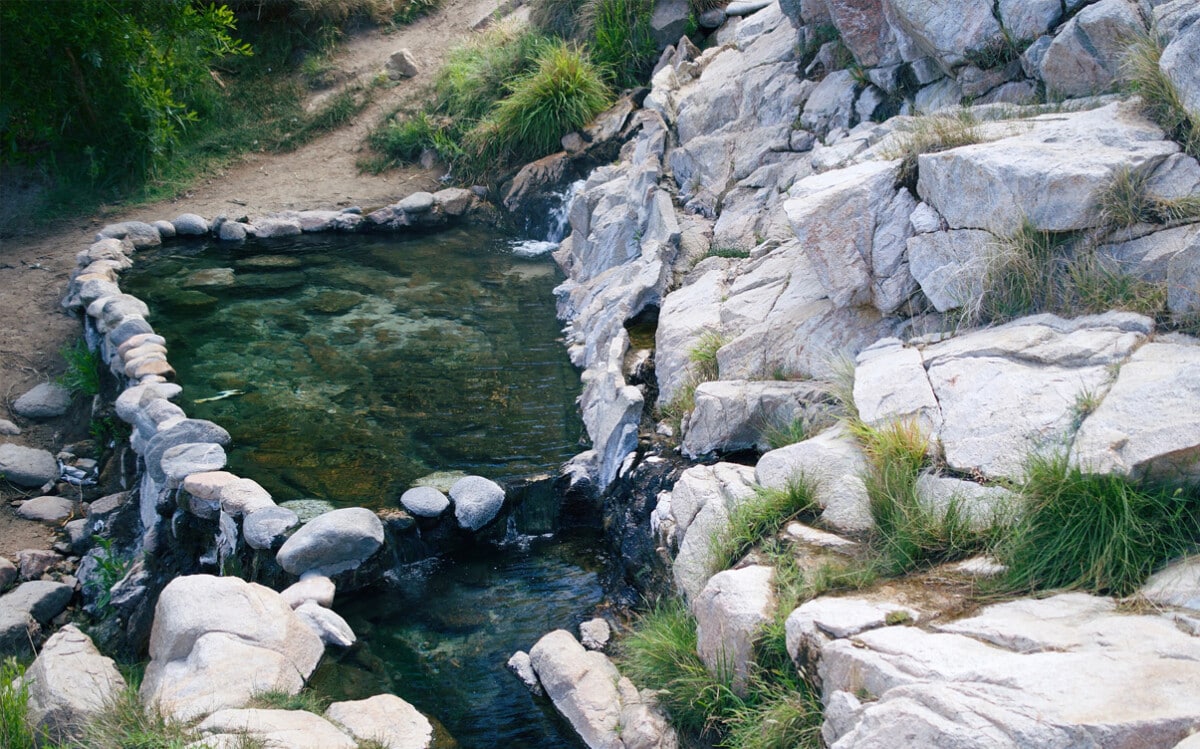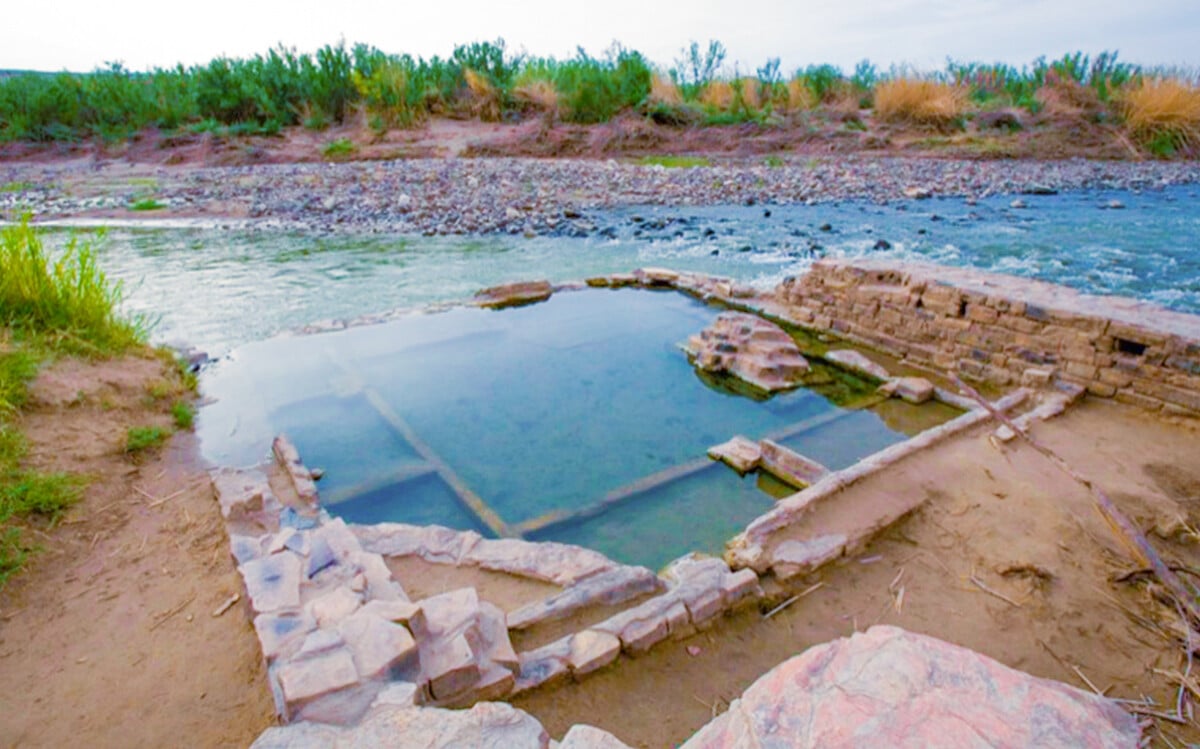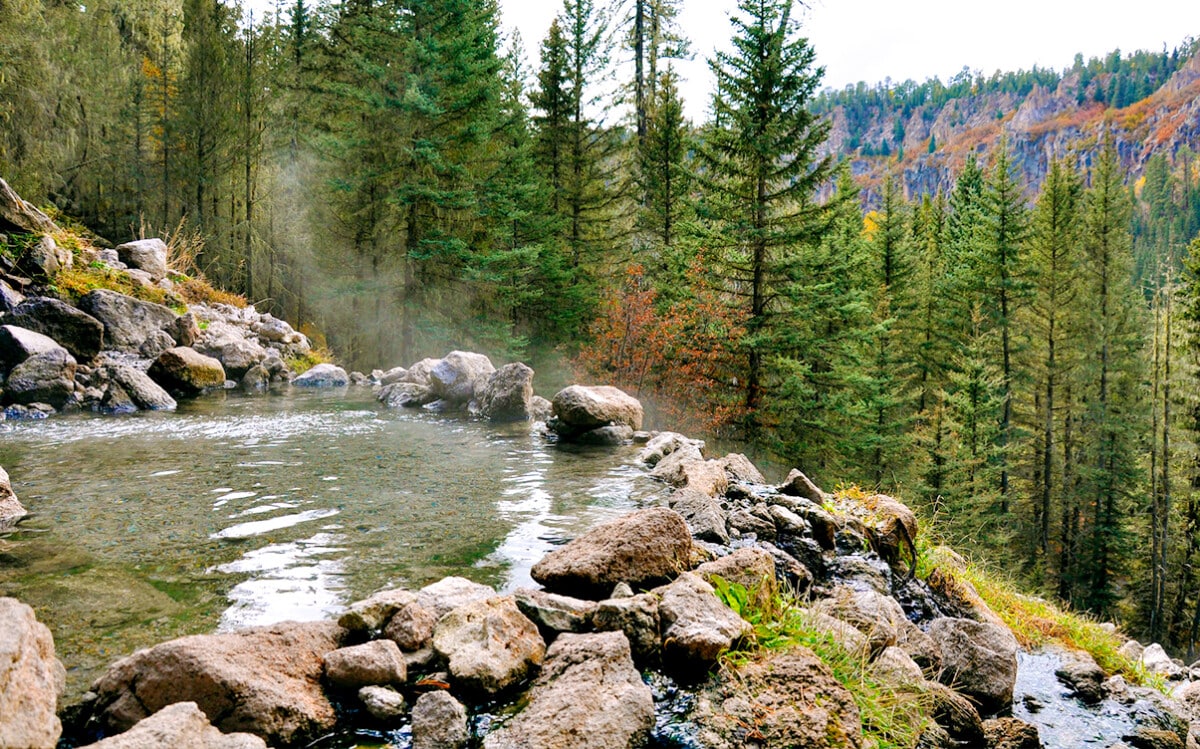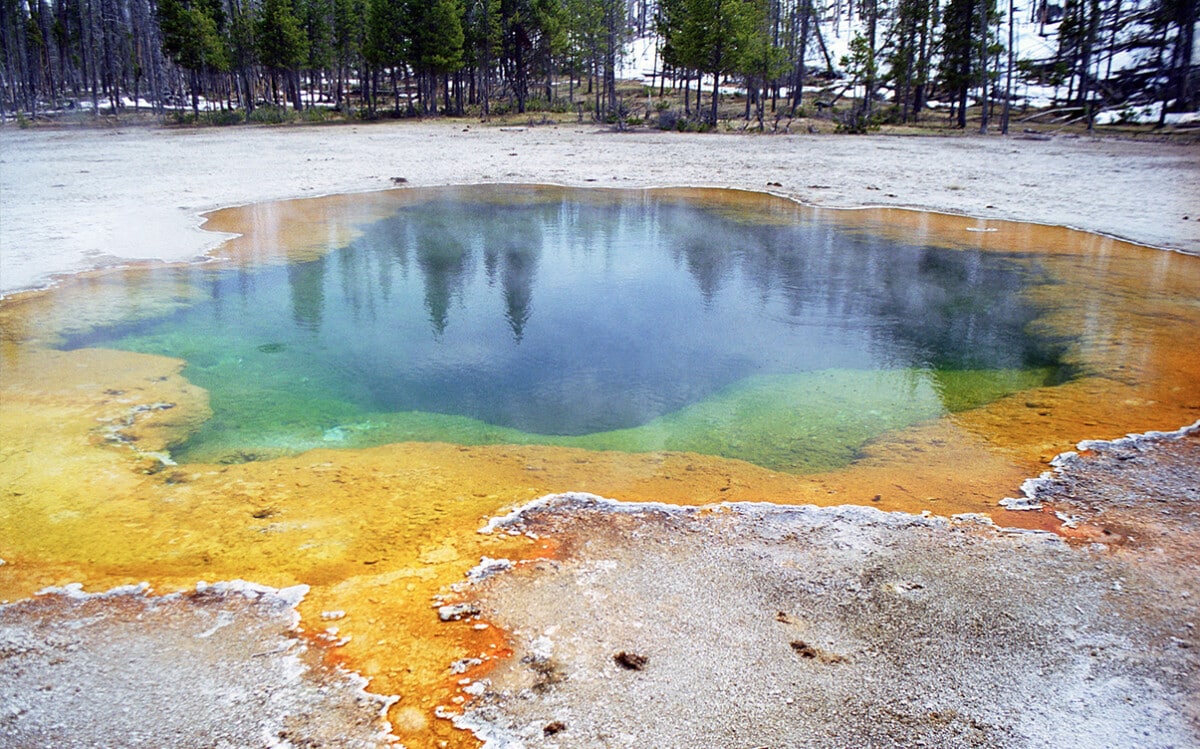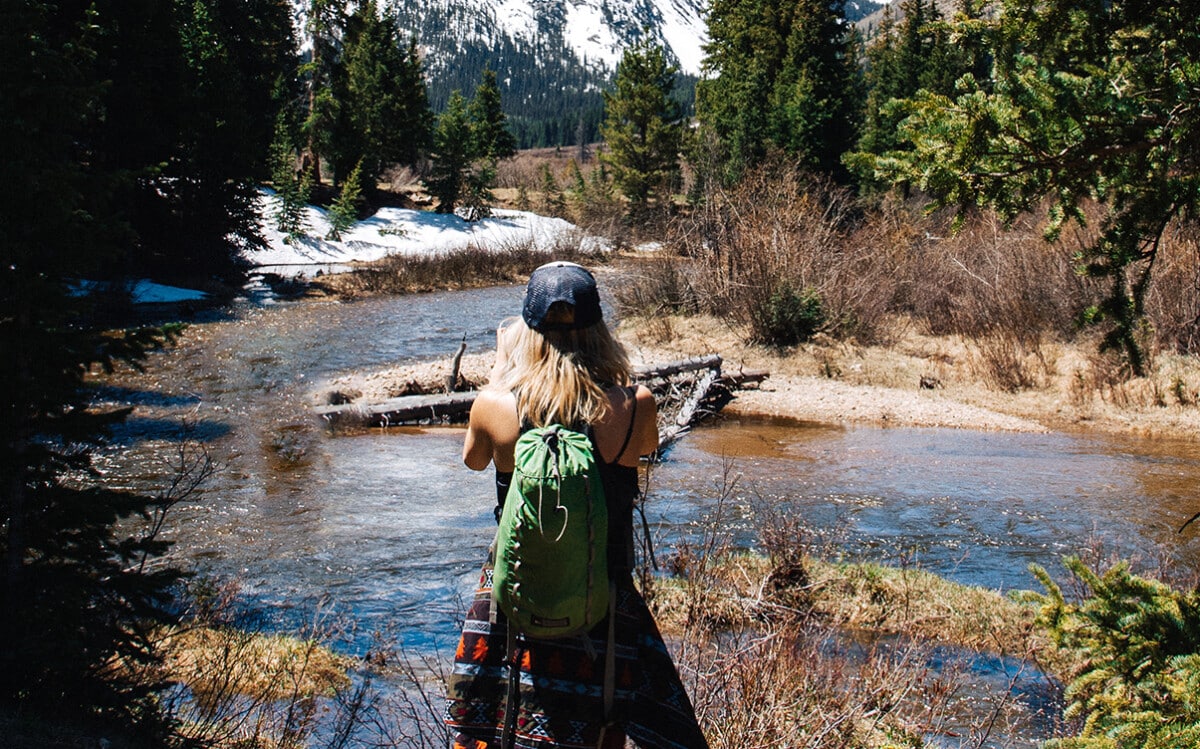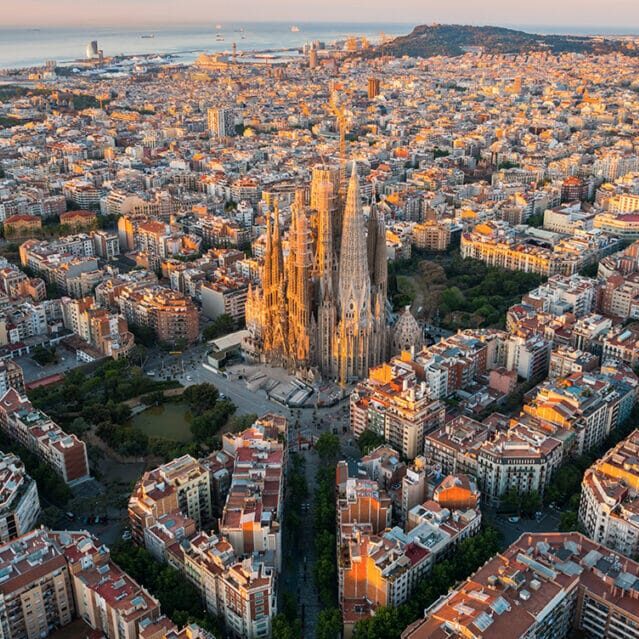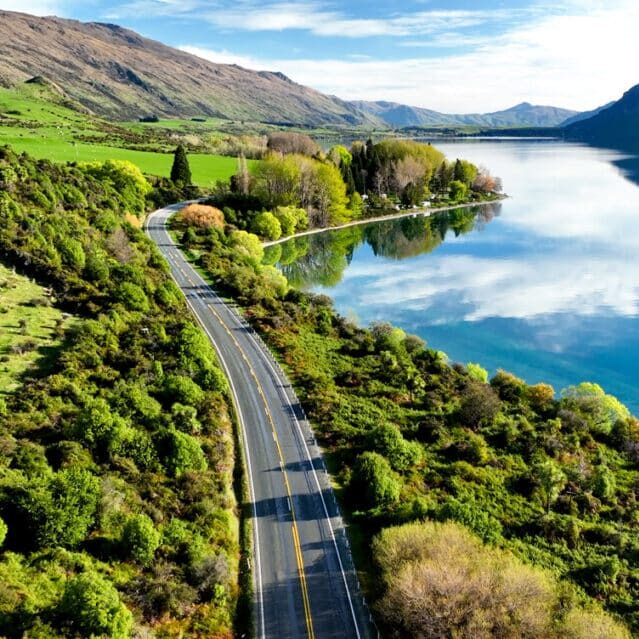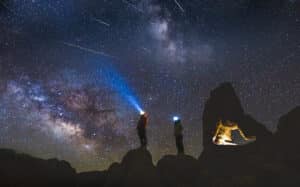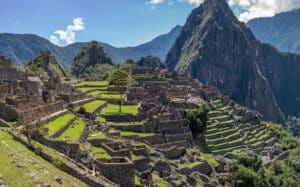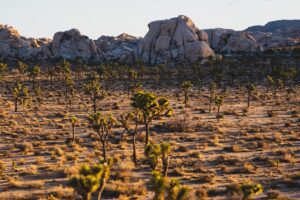The Top 12 Hot Springs in the US (Public, Hidden & More)
Disclaimer: This post may contain affiliate links. Please see our Disclosure Policy and Advertiser Disclosure for details.
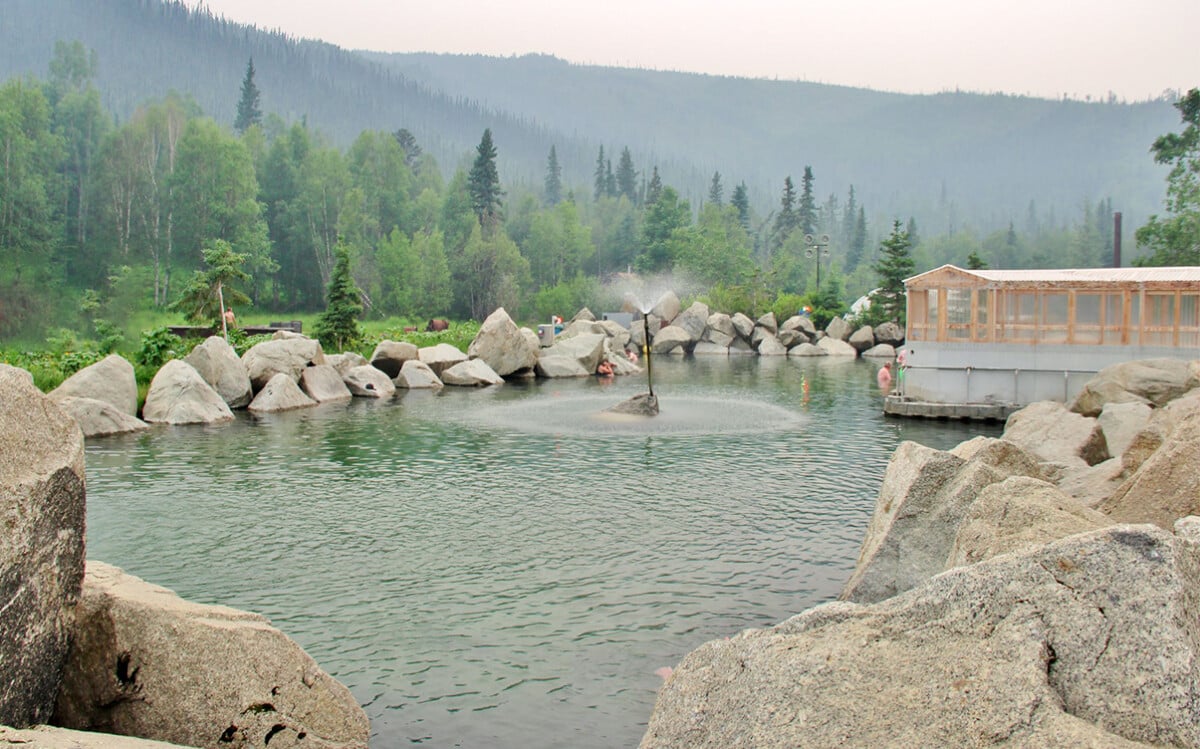
Hot Springs are, in many ways, a keen representation of the thriving world we inhabit. They’re a stunning feature of the activity happening below the surface of the planet but close enough where the heat of that activity can warm the waters that reach the surface.
Some hot springs are just too hot for humans to touch. Others are filled with nasty chemicals, acids, and minerals that make them caustic and impossible to enjoy. Many, though, are a perfectly pleasant heat, a soothing, lightly mineralized natural spring water, and, often, gorgeous scenery all around.
Hot springs are found all around the US, but some are better than others. We’ve put together a list of a dozen of our favorites for you to travel to and enjoy. Before we get started, though, a note: we’ll be a little light on the springs in Colorado because we already covered Colorado hot springs in detail.
So, what are our favorite hot springs all across the country? Read on to find out.
1: Chena Hot Springs in Fairbanks, Alaska
Located an hour away from Fairbanks in remote Alaskan wilderness, Chena is a tiny little resort situated around the hot springs. It has a small airport, the Aurora Ice Museum, and not a whole lot else. Well, there’s one more thing: an unparalleled view of the night sky from the deep wilderness and far north.
The ice museum is appropriately named, as well, because Chena is an incredible place to try to see the northern lights. It’s one thing to trek out into the wilderness, bundle up in a parka, and turn your eyes to the sky; it’s quite another to be able to relax in the warm, soothing mineral waters of a hot spring while gazing at the light show.
Being realistic, of course, the chances of having that perfect evening are relatively slim. The aurora is unpredictable and can’t be scheduled. But, in the worst-case scenario, you still have an excellent night sky and a wonderful experience at a resort in beautiful Alaska to look forward to.
2: Conundrum Hot Springs in Aspen, Colorado
Conundrum is a primitive spring, which means it doesn’t have a resort built around it. It really doesn’t have much at all around it, just some rocks arranged to keep the pools deep and warm. It’s also difficult to reach; you have a nine-mile hike in the Rockies ahead of you, with 2,400 feet of elevation between you and your destination.
What awaits you at the top is breathtaking. Not only is the hot spring a wonderful attraction in its own right, but the views of the mountains are absolutely stunning. It’s also the highest-elevation hot spring in the country.
Conundrum is a free spring, but if you plan to stay in the area overnight, you need a recreation pass from recreation.gov for overnight camping. There are absolutely zero amenities anywhere nearby, so you’ll need to bring in anything you need (and bring it back out with you). This isn’t a simple spring to reach, but for our money, it’s one of the best.
3: Umpqua Hot Springs in Glide, Oregon
While Oregon isn’t quite as far afield as Alaska, the rainforest canopy surrounding this hot spring can certainly feel similar to the untamed Alaskan wilderness. Located in southern Oregon, Umpqua – a native word meaning Dancing Water – is a chain of springs cascading down a hillside.
This is an extremely photogenic and popular hot spring, so you’re fairly unlikely to be there on your own. It’s very popular with bloggers, Instagram models, photographers, and hot springs enthusiasts, so keep that in mind when you plan your trip.
Speaking of planning, Oregon has some extreme weather from time to time, with blizzards and rain often closing the roads that let you get to Umpqua. Moreover, you’re not allowed to camp at the springs, and they close at sunset. You can camp nearby in the national forest, though, so you’re not entirely out of luck. You just won’t be set up for a midnight soak.
4: Mystic Hot Springs in Monroe, Utah
Mystic is a developed hot spring resort. It’s been around for quite a while, but its current form started in 1995 when the artist and director Mike Ginsburg stumbled across it and decided to buy it. Since then, he’s added more soaking pools, restored cabins, and turned the entire resort into a venue for artists and performers of all types.
Since it’s a resort and not a primitive spring, it’s not free, but it’s better maintained and less of a wildcard of how it’s going to be when you arrive. The water cascades from 165 degrees at the spring down to pools in the 100-120 degree range for soaking and even pools with tropical fish further down. You’re also able to just drive up to the resort instead of hiking for miles to get there. It takes some of the accomplishment away, but hey, you know what you’re getting with a resort.
One of the nice things about Mystic is that there’s seemingly always some kind of event happening. Musicians, in particular, love to play at the venue, so you can enjoy live music while you’re soaking and enjoying the waters.
5: Travertine Hot Springs in Bridgeport, California
One of the more accessible, mostly-primitive springs on this list, Travertine is a pretty close drive to numerous other attractions in the area, and it’s only a short hike from a parking area to the springs themselves. Located in a large, flat area with views of plains and mountains all around, Travertine is up there in terms of beautiful scenery to see while you soak.
Travertine has five pools, a combination of natural and man-made, with the largest, warmest, and closest pool being the man-made one. It’s very pleasant, but not as private as the others. Since the springs are located on state land, there’s not much in the way of amenities, though it’s still close enough to civilization, and there’s an outhouse nearby, so you’re not completely roughing it.
If there’s any downside to Travertine, it’s that the weather can be wild. Storms can blow in out of nowhere in a matter of minutes and be gone just as fast. If you want predictable, this is not the place for it.
6: Hot Springs National Park in Hot Springs, Arkansas
Located in Arkansas near Little Rock, the entire national park, the town with the same name, and the springs themselves are all fantastic and laced with history. These springs have been visited for hundreds of years. Whether you visit the town and the many spring-focused resorts or hike out into the national park to find the more primitive springs, there’s something for everyone in the area.
As an added bonus, Hot Springs is in the path of totality for the 2024 solar eclipse, making it an incredible place to stay for eclipse-watching. Just make sure to book your space now because it’s going to be a very, very popular destination.
7: Arizona Hot Springs in Willow Beach, Arizona
While “hot” is probably one word that comes to mind when you think of Arizona, hot springs might not be. Yet, the Arizona Hot Springs, located an hour from Las Vegas, is an incredible little oasis in the middle of the desert.
This is also one of the most dangerous hot springs on this list. Despite being relatively close to civilization, it’s isolated, and the trail you need to hike to reach it is exposed. It’s so exposed, in fact, that it’s closed in the summer because the sheer heat is liable to kill someone unprepared for it. There are also rattlesnakes in the area, and the springs have a potentially deadly amoeba lurking in them.
So why is such a dangerous spring on the list at all? Well, the stark beauty of the canyons in Arizona can’t be matched, and a spring shaded deep in a canyon is a unique experience you can’t get anywhere else.
8: Goldstrike Hot Springs in Boulder City, Nevada
Another spring near Vegas, but in Nevada this time, Goldstrike is a unique and fascinating spring. It’s only half an hour away from Vegas, but the stark canyon landscape hides it such that you’d never believe you were that close to a major city if you didn’t know better. It’s a relatively short hike – just five miles – but it’s challenging and technical to get there. The hike starts easy, but you eventually need to put your climbing skills to the test using ropes to navigate huge boulders and following arrows on the rocks to reach it.
What’s really cool about this spring is that there are three different pools scattered along the route. But, if you keep following it, you reach the Colorado River for both beautiful photo ops and hot-cold soaking as the waters mix. Just beware of the currents!
9: Deep Creek Hot Springs in Hesperia, California
Located in the San Bernardino National Forest, these springs are a consequence of a natural creek eroding its way into the earth and tapping into a hotter current just beneath the surface. The Forest Service calls it unique and regionally important because it’s both a watershed for the area, a wild trout stream, and a habitat for a diversity of wildlife.
There are two different routes to hike to reach these springs. The first is short, only around four miles, but it’s quite steep and difficult, especially to go back. The other is a lot smoother and easier to hike, but it’s a six-mile hike one-way, which might leave you with relatively little time to soak.
Pay attention in the area around the creek for a tiny two-inch toad called the Southwestern Arroyo Toad, an endangered species.
10: Big Bend Hot Springs in Big Bend, Texas
Formerly known as Boquillas Hot Springs, this is a historic spring, which means that while it’s not a primitive spring and has man-made structures containing and surrounding it, many of those structures are well over a century old. You really feel like you’re soaking in history when you spend time in these springs. Unfortunately, the historic bathhouse that once stood on the spot is long gone, but the springs themselves remain.
Despite not being currently developed, there’s also no local camping around the springs. You’ll need to drive in and out. As is the case for most springs, avoid bringing glass and anything dangerous, and pack it all out when you leave.
11: San Antonio Hot Springs in Jemez Springs, New Mexico
This spring is located in the Santa Fe National Forest, and it’s the destination for a number of different trails. You can take a five-mile route or a 1.5-mile route through the forest to get there and have all sorts of beautiful hiking adventures throughout the forest.
The mountain scenery is gorgeous, and the springs are warm all year long, so it’s a great destination to visit if you’re in the area.
12: Yellowstone Hot Springs in Yellowstone, Montana
What list of springs would be complete without a mention of Yellowstone? The massive park is known for a wide range of geysers and natural springs, but most of them are decidedly unsafe for people. Some are much too hot, some are turbulent, some are chemically active, and many are simply off-limits because to allow access would be to damage them beyond repair.
Fortunately, knowing human nature and knowing people want to soak, Yellowstone has been developed enough to have some accessible, mineral-rich natural springs for soaking. They’re only open certain days of the week, and they cost money to access, but the experience is truly once-in-a-lifetime.
Your Favorites
We’ve put together a dozen of our favorite hot springs, but what about yours? We definitely didn’t cover all the bases. In fact, we even did our best to spread out our recommendations across a dozen different states as well. That means a lot of fabulous springs were left off the list.
So tell us: which springs are your favorites, and where are they? Let us know in the comments below!
You may also enjoy:
